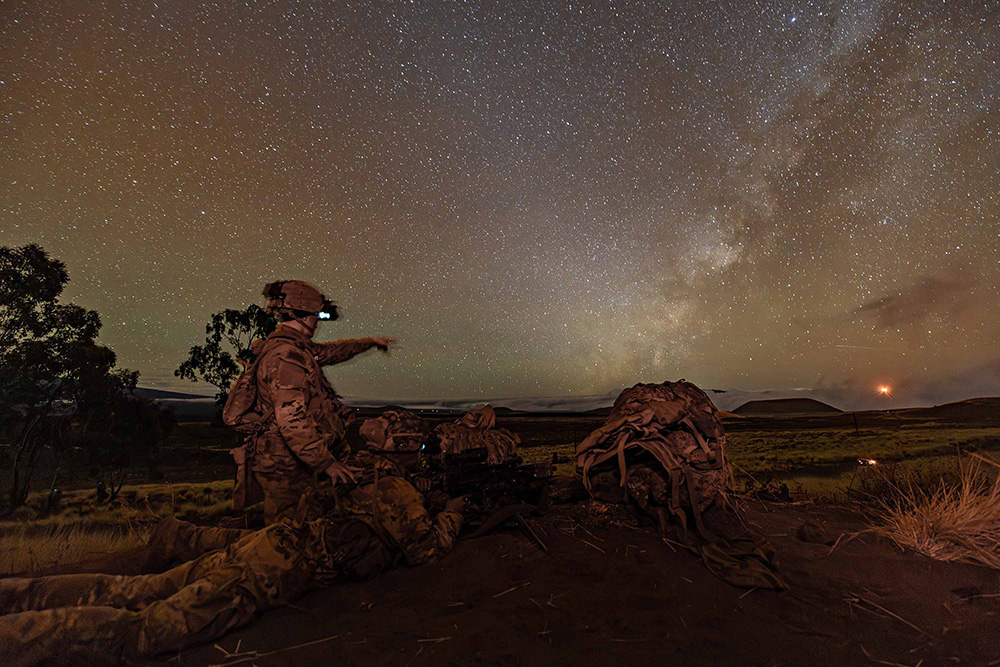The Defense Department is expanding its work with interagency partners to promote sustainable land-use practices at key sites near military installations. The department announced on Wednesday, alongside interagency partners, that five new sentinel landscapes have been designated.
The newly designated sites in New Mexico, Utah, Hawaii, Pennsylvania, and California join the more than 4.4 million acres of land enrolled in the Sentinel Landscapes Partnership.
Founded in 2013, the partnership represents the combined effort of DOD and the departments of Agriculture and Interior to strengthen military readiness, conserve natural resources, increase outdoor recreation and enhance resilience to climate change.
“The Sentinel Landscapes Partnership provides DOD with the unique opportunity to expand and diversify our partnerships with nongovernmental organizations, state and local governments, tribes, and land managers to enhance the resilience of military installations and the local communities that support them,” said Brendan Owens, assistant secretary of defense for energy, installations and environment.
“This year, the department is excited to support the five newly designated landscapes in achieving their dual priorities of safeguarding national defense and enhancing installation and community resilience, particularly in the Pacific and Western regions,” he said.
The Eastern New Mexico Sentinel Landscape includes more than 2.4 million acres near Cannon Air Force Base and the Melrose Air Force Range, which supports training and testing for the 27th Special Operations Wing, 26th Special Tactics Squadron and 43rd Intelligence Squadron.
Agency partners aim to safeguard local water supplies and bolster installation and local community resilience to climate change. The agencies are also focused on advancing sustainable farming practices on the lands and fostering community partnership through education and training.
The Great Salt Lake Sentinel Landscape spans more than 2.7 million acres near Hill Air Force Base, Camp Williams, Tooele Army Depot and Air Force Little Mountain Test Facility in northern Utah.
Agency partners will focus on promoting mutually beneficial land management programs, managing wildfires, and protecting local wildlife populations. The agencies will also focus on protecting water resources and the Great Salt Lake ecosystem.
The Hawaii Sentinel Landscape includes more than 2 million acres of conservation, agricultural and DOD mission lands on the islands of Kauai, Oahu and Hawaii that have come under threats posed by rapid urban development and climate change.

Army Spc. Collin Hall and Army Spc. Areg Safari prepare for a simulated attack during training at Pohakuloa Training Area, Hawaii, Nov. 9, 2023. © Army Capt. Angelo Mejia
Agency partners will focus on providing the owners and managers of the newly designated lands with tools and protection measures to counter the impacts of severe weather events, safeguard conservation and agriculture, and promote land use that is compatible with military missions.
The Kittatinny Ridge Sentinel Landscape, located in Pennsylvania’s Appalachian Mountain Region, encompasses land surrounding Fort Indiantown Gap, one of only three specialized Army National Guard aviation facilities and the Army’s second busiest heliport.
By designating the sight as a sentinel landscape, agency partners aim to bolster land conservation and natural resource protection initiatives and supporting economic development while preserving military mission readiness and operational capabilities.
The Mojave Desert Sentinel Landscape includes nearly 3.5 million acres in California near the Marine Corps Air Ground Combat Center, National Training Center Fort Irwin, Edwards Air Force Base, Naval Air Weapons Station China Lake and Marine Corps Logistics Base Barstow.
Agency partners will focus on mitigating the impacts of climate change and wildfires and reclaiming and rehabilitating up to 50,000 acres of priority wildlife habitats, while also supporting critical military missions.
The announcement caps the 2024 sentinel landscape designation cycle.
Since establishing the Sentinel Landscapes Partnership 11 years ago, the interagency partners have worked with private landowners and implemented sustainable management practices across 2.7 million acres near military testing and training areas.
“These efforts preserve wildlife habitat, bolster agricultural and forest production, and support climate resiliency, among other benefits, while at the same time ensuring our military has the space it needs for its operations, said Terry Cosby, the USDA’s natural resources conservation service chief. “This work showcases the power of collaboration and partnership to help us meet our mission.”
Officials said the new designations mark the interagency commitment to continued partnership with local stewards.
“We are committed to investing in sustainable land-use practices with our fellow federal partners in the spirit of shared stewardship,” said USDA Forest Service Chief Randy Moore. “The Sentinel Landscapes Partnership provides support to military readiness while securing conservation benefits, bolstering forest economies, increasing public access to outdoor recreation, and providing wildfire risk reduction for communities.”





